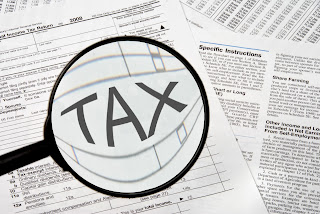1040-Which Form Will Work Best For You
There are many different versions of the 1040 tax form. The three most commonly used ones are the 1040, 1040A, and 1040EZ forms. They all serve different purposes, but some may be better for you to use than others.The 1040 form deals with incomes, credits, and deductions that aren’t covered on the 1040A or 1040EZ forms. Some (but not all!) of these are:
- income from self-employment
- tips unreported over the amount of $20 in any given month
- income as a result of a partnership, trust, estate, or s-corp
- Itemized deductions
- $100,000 or greater income
- gambling income
- if you claim the Premium Tax Credit
The 1040A form covers:
- income that is only from salary, tips, wages, dividends, interest, capital gains, taxable fellowships/grants/scholarships, pensions, annuities, IRAs, unemployment compensation, AK PFD money, and taxable social security and railroad retirement benefits
- taxable income must be less than $100,000
- tax credits only from Child Dependent Care Credit, Elderly or Disabled credit, Child Tax Credit, educational credit, retirement savings, Earned Income Credit, Contributor Credit
- income adjustments can only be made from education expenses, IRA deductions, and education expenses
- The 1040EZ form, also known as the “Income Tax return For Single and Joint Filers With No Dependents” or the “easy form”. This form is an alternative to the 1040 form to offer a faster and easier way to file and it is meant for taxpayers with very basic tax situations.
These are the criteria for filing with the EZ form:
- filing status is single or married filing jointly
- no dependents to claim
- no tax credits to claim except the Earned Income Tax Credit
- you (and your spouse if you are filing jointly) are under the age of 65 and not blind.
- taxable income is below $100,000
- your income is only from salary, tips, wages, unemployment compensation, taxable grants and scholarships, interest income less than $1500, and the AK PFD dividend.Any other sources of income, such as dividends or alimony will keep you from using the 1040EZ, you will have to use one of the other forms.
Is The 1040EZ Still For You?
If you have decided how you want to file your own taxes, and you want to use the 1040EZ form because of the ease and simplicity, be aware there may be drawbacks. For the first time starting in 2015, some people who previously used the 1040EZ form will not be able to because of their health care, “This applies to folks who bought Affordable Care Act-required health insurance through a state or federal exchange, also known as the marketplace.An option upon policy purchase was to receive advance payment of the premium tax credit. This tax credit helps cover some of the insurance costs. The advance credit amount, however, must be accounted for when the policy recipient files his or her tax return.
If the advance premium amount was too small, the taxpayer will get the extra. However, if too large of an advanced premium credit was paid, the taxpayer must make up the difference, either by paying any tax due or by having the amount taken from an expected refund.
Such calculations are made on Form 8962, which only can be filed with Form 1040A or 1040. If you received advance payments of the premium tax credit, you must file one of these longer forms instead of the 1040EZ.
If you did not get the premium credit in advance but got health care through an exchange and want to claim it when you file, you must complete 1040A or 1040.” Also if you have a student loan, consider using the 1040A so you can deduct interest paid on that loan. But if these don’t apply to you and you qualify for it, read on for how to file your own taxes with the EZ form.






